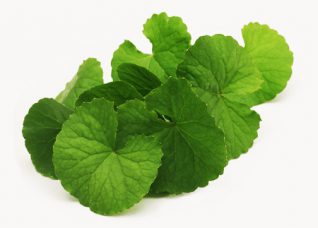
MinerAlert

MinerAlert
Centella asiatica
Apiaceae
Brahmi*, Indian pennywort, hydrocotyle, manduki, manduka-parni, Madekassol, spadeleaf, centella, ji xue cao, thankuni
*In India, the common name “Brahmi” is also used to designate a very different plant, Bacopa monnieri - Plantaginaceae.

Gotu Kola is probably native to Southern Asia, and grows in marshy or wet habitats in Madagascar, India, Sri Lanka, China, and Mexico, as well as in certain areas of South America and South Africa.
Mainly the leaves and stems, although the root is sometimes used.
The plant is edible and the juice may be taken with milk. The herb can be fried in clarified butter. The powdered herb can be mixed water or sesame oil is applied externally for eczema, psoriasis and other skin conditions (Khare, 2004). Gotu kola is commercially available in capsules, pills, extracts, and ointments. In Mexico, the plant is decocted in water and taken internally to improve venous circulation and for weight loss (Mendoza-Castelán and Lugo-Pérez, 2011).
In both China and India, Gotu kola has a reputation as an anti-aging remedy as well as to improve memory. The plant possesses anabolic, antiepileptic, nootropic, vulnerary, anti-inflammatory, antifibrotic, antitumor, adaptogeninc (helps adapt against various types of stress), venotonic (helps venous circulation) and depurative effects. Research with Gotu Kola has shown that it is useful in chronic venous insufficiency (CVI), microangiopathies in type 2 diabetes, and keloids (Vohora and Vohora, 2016; Bone and Mills, 2013; Quattrocchi, 2012).
In the ancient medical systems of India, mainly Siddha and Ayurveda, the plant is used to improve cognitive functions, against liver fibrosis, to stabilize atherosclerotic plaque, and as an anxiolytic (to decrease anxiety). This species is also used externally and internally for leprosy and scleroderma. For external application it is used for psoriasis (Van Wyk and Wink, 2014; Bone and Mills, 2013; Khare, 2007, 2016). Bylka et al. (2014, 2013) mention that Gotu Kola is effective in improving treatment of small wounds, hypertrophic wounds as well as burns, psoriasis and scleroderma. For this reason, this plant has various potential applications in modern cosmetology.
The plant has been used in India as a contraceptive and animal studies have shown that certain bioactive compounds in the plant possess anti-fertility effects (Bone and Mills, 2013). The boiled leaves are eaten for urinary tract infections and the unfiltered juice from the plant is drunk for scrofula and syphilis (Khare, 2007).
The main active ingredients in Gotu Kola include triterpene saponins, also known as centellosides, such as medacassoside and asiaticoside (also known as asiatic acid). A study by Sirichoat et al. (2015) investigated the relationship between spatial working memory and changes in cell proliferation within the hippocampus after administration of asiatic acid to male Spraque-Dawley rats. The results of the study showed that asiatic acid treatment may potentially be a potent cognitive enhancer which improves hippocampal-dependent spatial memory, presumably by augmenting hippocampal neurogenesis
Flavonoid compounds and sesquiterpenoids are also present. The triterpenoid compounds act as spindle poisons during the metaphase of the cell cycle and prevent cell division (Van Wyk and Wink, 2014; Bone and Mills, 2013). However, Chandrika and Prasad Kumarab (2015) mention that there are only limited detailed scientific clinical trials regarding the health benefits and nutritional value of this plant, as this precludes learning more about its benefits, mechanisms, and possible toxicity.
Safety/Precautions:
Before you decide to take any medicinal herb or herbal supplement, be sure to consult with your health care professional first. Avoid self-diagnosis and self-medication: Always be on the safe side!